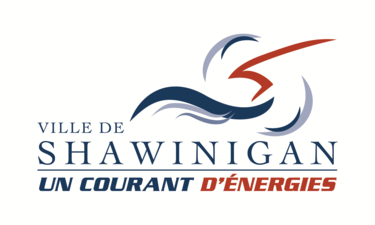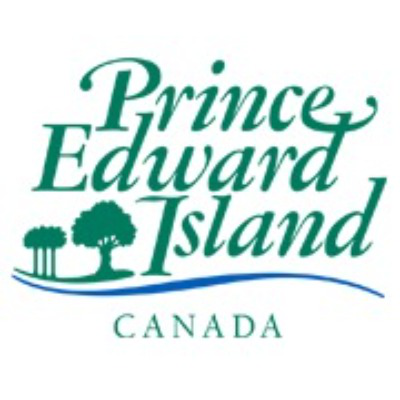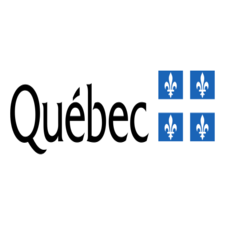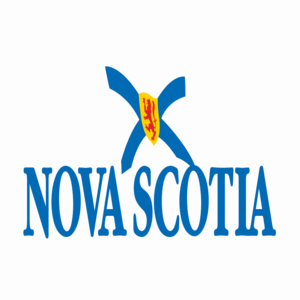RI_539
Type of resources
Available actions
Topics
Keywords
Contact for the resource
Provided by
Formats
Representation types
Update frequencies
status
-

Fisheries and Oceans Canada (DFO) conducts an annual summer multidisciplinary scientific survey with a bottom trawl in the Estuary and the northern Gulf of St. Lawrence since 1984. Over the years this survey has been conducted on four vessels: the MV Lady Hammond (1984-1990), the CCGS Alfred Needler (1990-2005), the CCGS Teleost (2004-2022) and the CCGS Cabot (2022-current). It is important to note that the objectives, the methods used and the identification of the species during these surveys have improved over time in response to DFO requests and mandates. The data are therefore not directly comparable between these surveys. However, comparative analyses have been carried out between vessels, and conversion factors are available upon request for a number of species. The specificities of the missions onboard the CCGS Cabot are described below. Objectives: 1. Assess groundfish and northern shrimp population abundance and condition 2. Assess environmental conditions 3. Conduct a biodiversity inventory of benthic and demersal megafauna 4. Assess phytoplankton and mesozooplankton abundance 5. Monitor the pelagic ecosystem 6. Collect samples for various research projects Survey description The survey covers the Estuary and the northern Gulf of St. Lawrence, that is the divisions 4R, 4S and the northern part of division 4T of the Northwest Atlantic Fisheries Organization (NAFO). Since 2008, coverage of division 4T has been increased in the upstream part of the Lower Estuary. Approximately 200 sampling stations are randomly attributed in depth-based strata, ranging from around 40 m near the shores to close to 500 m in the deep channels. The fishing gear used on the CCGS Cabot is a four-sided modified Campelen 1800 shrimp trawl equipped with a Rockhopper footgear (“bicycle”). The trawl lengthening and codend are equipped with a 12.7-mm knotless nylon lining. Standard trawling tows last 15 minutes, starting from the time the trawl touches the sea floor. The aimed towing speed is 3 knots. Data For each fishing tow, the catch is sorted and weighed by taxa; individuals are then counted and biological data are collected on a subsample. For fish, crab and squid, size and weight are measured by individual and, for some species, sex, gonad maturity, and the weight of certain organs (stomach, liver, gonads) are also evaluated. The soft rays of the anal fin are counted for redfish, and the otoliths are sampled for several species such as Atlantic cod, Atlantic halibut, Greenland halibut and witch flounder. A roughly 2-kg shrimp sample is sorted and weighed by species (and by stage of maturity for northern shrimp). The shrimps are measured individually. The other invertebrates are counted (no individual measurements) and photographed. The biological data are divided into 4 files: a “Metadata” file containing set information, a “Catches” file containing catches per set for fish taxa, a “Carbio” file containing biological and morphometric measurements per individual and a “Shrimps” file containing information on shrimp catches. The latest published data is preliminary and will be updated at the end of January of the following year. It's important to note that this is raw data. Only sets considered successful are retained. In each set, all species are kept, with a few exceptions. For more information please contact the data management team (gddaiss-dmsaisb@dfo-mpo.gc.ca).
-

Polyline layer of ATV trails (off-road vehicles) on the territory of the city of Shawinigan. ! [Shawinigan logo] (https://jmap.shawinigan.ca/doc/photos/LogoShawinigan.jpg) **Collection method** Digitization from orthophotography **Attributes** * `objectid` (`integer`): * `season` (`char`): Season * `club_name` (`char`): Name * `class` (`char`): Class * `no_sentier` (`char`): Number * `st_length (shape) `(`double`): Length For more information, consult the metadata on the Isogeo catalog (OpenCatalog link).**This third party metadata element was translated using an automated translation tool (Amazon Translate).**
-

This metadataset was compiled to document scientific dive operations conducted within the Banc-des-Américains Marine Protected Area (MPA). Its purpose is to enable the tracking of field activities carried out as part of ecological monitoring of the atlantic wolffish (Anarhicas lupus) habitats and other key species. Metadata were collected for each scientific dive, following a standardized protocol implemented since 2014 that includes the date, participating team, GPS coordinates, depth, and dive duration. The released dataset contains only descriptive and contextual information related to each dive operation: dive identifier, site, date, location, conditions of execution, method used, and environmental variables when recorded. It does not include photographs, videos, raw biological observations, or analysis results. Quality control involves standardization of the metadata form, verification of GPS positions and recorded depths, as well as annual internal review of the dive series by the scientific coordination team. Established procedures ensure the completeness, consistency, and traceability of the descriptive data provided.
-

This provincial layer shows the site locations for waterpower Applicants of Record seeking regulatory approvals for renewable energy projects on Crown land. The ministry will not accept another application for the same lands at the same time under the Renewable Energy on Crown Land (RECL) policy.
-

This data set provides geographic information for Health PEI facilities (Hospitals, Cancer Treatment Centres, Palliative Care Centre, Primary Care Networks, and Public Nursing Homes.
-

The database on uses related to the aquatic environment (URMA) is a database consisting of information on water-related activities collected by representatives of the General Directorate for Monitoring the State of the Environment (DGSEE) of the Ministry of the Environment, the Fight against Climate Change, Climate Change, Wildlife and Parks (MELCCFP) and by the watershed organizations responsible for implementing the integrated management of the water at the watershed scale. Uses related to the aquatic environment can be classified into four main categories: uses practiced in coastal recreational areas, uses involving indirect contact with water, uses involving direct contact with water and finally, uses involving water sampling. Please consult the Lexicon of uses related to the aquatic environment for a description of each of the types of uses listed in the URMA bank.**This third party metadata element was translated using an automated translation tool (Amazon Translate).**
-

Since 1979, Fisheries and Oceans Canada has conducted near-annual mackerel egg surveys in the southern Gulf of St. Lawrence using a standardized methodology. This survey typically takes place over approximately 10 days in June and aims to quantify mackerel eggs, thereby contributing to the stock assessment of the northern contingent. Sampling is conducted at 66 fixed stations arranged in a predefined grid (see included image for station locations and names). Additional stations—following the same sampling methodology—have also been surveyed off of southwestern Newfoundland, eastern Cape Breton and south of Prince Edward Island, as well as in other regions. The mackerel survey is often coordinated with the Atlantic Zone Monitoring Program (AZMP) for the Quebec region, which takes place around the same time using the same research vessel and similar equipment. While these two surveys are distinct, they are coordinated to complement each other. At each station, a tow using 61 cm bongo nets (333 µm mesh size) is towed following a saw-tooth profile through the upper 50 m of the water column. Tows last approximately 10 minutes at a speed of roughly 2.5 knots. These tows target mackerel eggs and larvae but collect other species and plankton stages. The taxonomic identification and classification of the developmental stages of the samples are then carried out in the laboratory. The number of taxon counted varies between survey years, based on new species encountered and identified. Egg development stages (I–V) are recorded only for mackerel. This dataset includes the records of all ichthyoplankton species sampled during the survey. It includes information for each sampling station, including gear specifications, species identifications, and life history stages. Each unique combination of COLLECTOR_STATION_NAME, COLLECTOR_EVENT_ID, START_DATE, START_LAT and START_LON represents a single sampling event, and all rows sharing this combination correspond to individual samples collected during that event. The dataset covers the period from 1983 to 2024 and is updated annually as new data become available. It is important to note that prior to 2023, nearly all species were systematically counted, with only a few exceptions where presence alone was recorded. However, since 2023, data collection has shifted to presence/absence for all species, except capelin larvae, herring larvae, and mackerel eggs and larvae, which continue to be counted. Note – raw data use with caution – please contact the author if you have any questions. The data processing methods used for the stock assessment are described in detail in the following publication: Lehoux, C., Van Beveren, E., and Plourde, S. 2024. Results of the Mackerel (Scomber scombrus L.) Egg Surveys Conducted in the Southern Gulf of St Lawrence from 1979 to 2022. DFO Can. Sci. Advis. Sec. Res. Doc. 2024/037. v + 47 p. https://www.dfo-mpo.gc.ca/csas-sccs/Publications/ResDocs-DocRech/2024/2024_037-eng.html
-

The Community Health Boards of Nova Scotia and the areas that they are responsible as shown by their spatial distribution.
-

This data breaks down estimated hunter and harvest numbers by: * wildlife management unit (WMU) * calendar year Harvest and active hunter numbers are estimates based on replies received from a sample of hunters and are therefore subject to statistical error. Additional technical and statistical notes can be found in the data dictionary.
-

La Financière Agricole's collective corn and grain crop insurance offers protection against losses in yield and quality assessed for the entire area where the insured units are located.**This third party metadata element was translated using an automated translation tool (Amazon Translate).**
 Arctic SDI catalogue
Arctic SDI catalogue